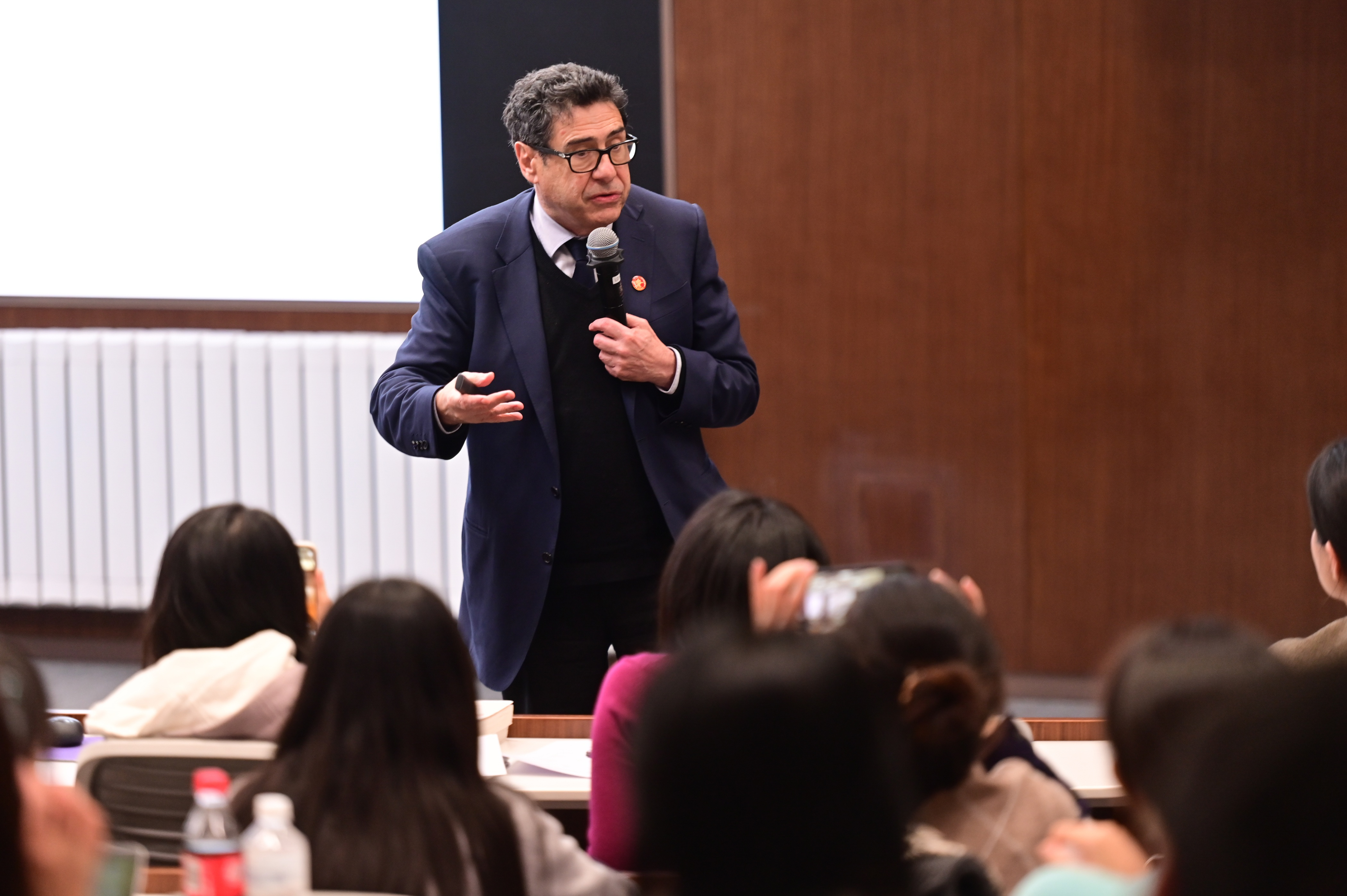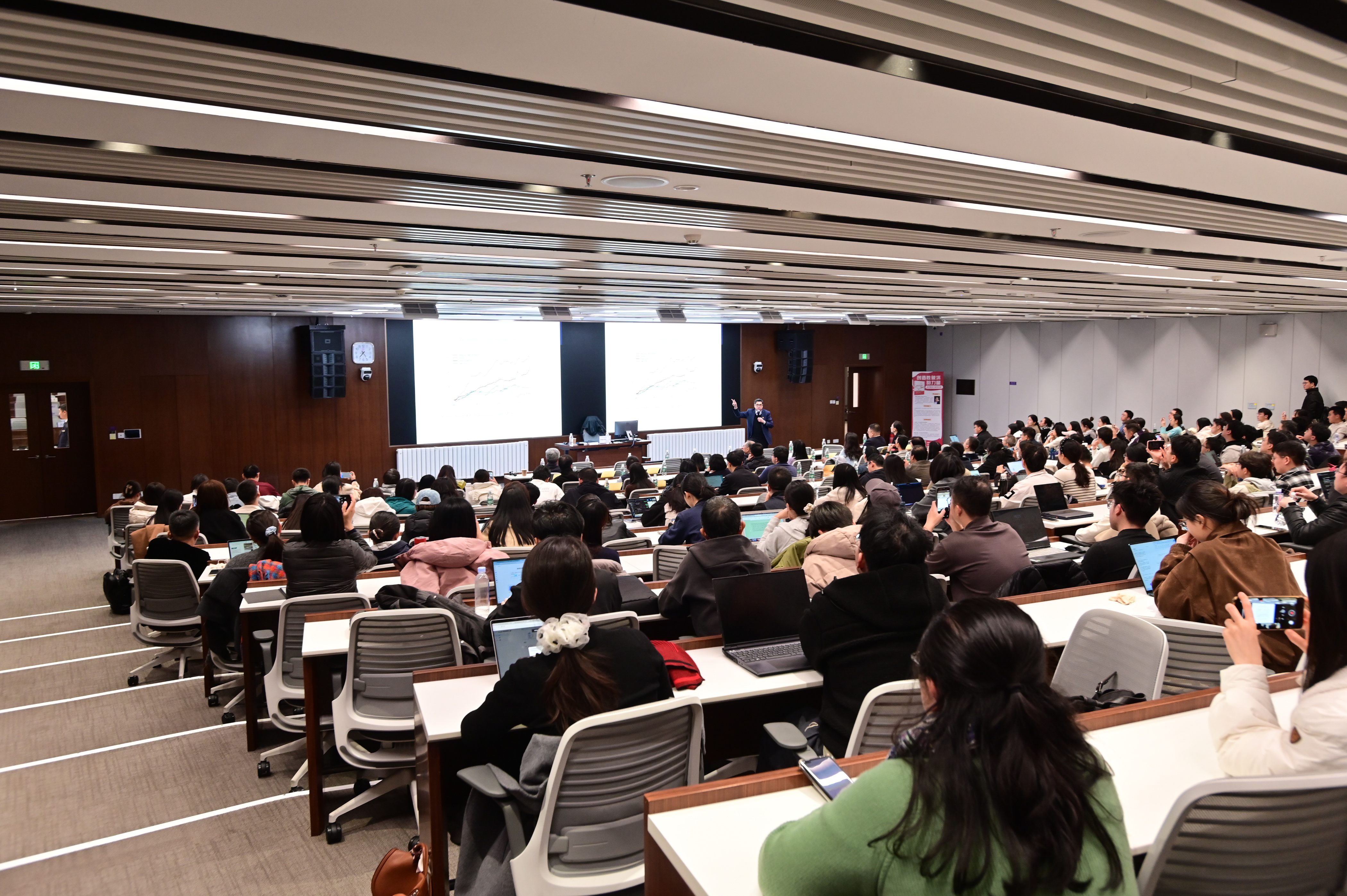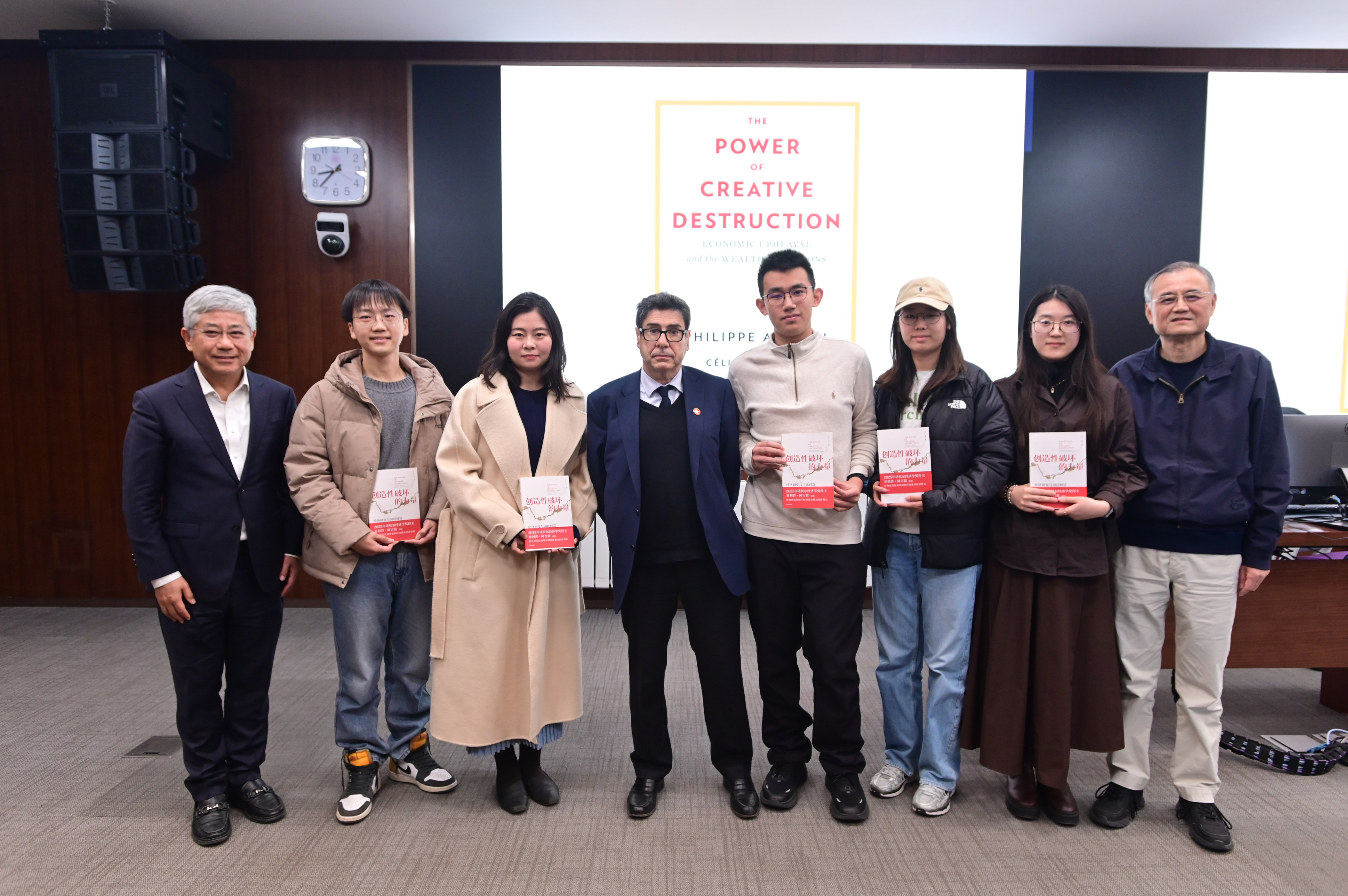Nobel-Prize winning economist Philippe Aghion, from Académie Française, delivered a lecture titled "Creative Destruction: The Power of Innovation" at Tsinghua University School of Economics and Management (Tsinghua SEM) on November 14, 2025.

Nobel-Prize winning economist Philippe Aghion, from Académie Française, delivers a lecture at Tsinghua SEM, November 14, 2025.
Bai Chong-En, dean of Tsinghua SEM, extended sincere gratitude and a warm welcome to Professor Aghion, who was jointly awarded the Nobel Memorial Prize in Economic Sciences in 2025 "for having explained innovation-driven economic growth."
Aghion began by interpreting the "creative destruction" theory—a concept proposed by economist Joseph Alois Schumpeter that identifies "new innovations replacing old technologies" as the key driving force behind economic development. He assessed the theory's three core elements: First, innovation is cumulative. Each new innovation builds upon past achievements, with each new generation of technology upgrading on the foundations of the old. Second, innovation requires incentives. Entrepreneurs are willing to invest in R&D because innovation enables them to introduce new products or cheaper production methods, temporarily outcompeting rivals and gaining monopoly profits. Third, it is essential to balance the contradiction between the old and the new. And it is necessary to maintain the motivation of existing innovators while preventing them from using their advantages to hinder new innovations.
Drawing on global economic phenomena, Aghion analyzed numerous key issues using the "creative destruction" theory. The United States achieved rapid growth through the IT revolution, with superstar companies like Google and Microsoft driving technological progress across the industry, he noted, but these companies later expanded their scale through mergers and acquisitions, gradually obstructing the entry of new firms. As competition dwindled, innovation was stifled, ultimately leading to a decline in firm turnover rates and slower economic growth, he added.
Next, Aghion explained the "middle-income trap." He stated that national economic growth can be categorized into two types: One is catch-up growth, which relies on imitating cutting-edge technologies, transferring technologies, and optimizing factor allocation. The other type is frontier innovation-driven growth, whereby, when technology approaches the global frontier, countries must rely on their own innovation to develop cutting-edge technologies. To escape the "middle-income trap" and further advance their economies, he said, countries must transition from catch-up growth to frontier innovation-driven growth.
Many worry that innovation will widen the wealth gap, but Aghion argued that it is crucial to distinguish between two types of disparities. He described the income gap at the top resulting from innovation as a "good" gap because, although it elevates innovators' incomes, it promotes social mobility and does not increase the overall Gini coefficient (a metric measuring income inequality within a country). In contrast, he said, the gap created by firms lobbying the government to block new entrants is a "bad" gap, which solidifies class structures and slows overall economic growth.

The students and faculty of Tsinghua SEM listened to Philippe Aghion's lecture, November 14, 2025
Regarding the potential negative disruptions caused by innovation, Aghion offered several policy recommendations to balance innovation with inclusivity. First, to address potential unemployment arising from industrial innovation, governments can provide subsidies and retraining programs to reduce the social costs of creative disruption. Second, education should be leveraged to identify and nurture "lost Einsteins"—talented individuals from disadvantaged backgrounds with the potential to innovate—by emphasizing foundational education and fostering creativity. Additionally, governments need to optimize competition policies to ensure reasonable competition within industries, thereby promoting continuous innovation.
During the interactive Q&A session, Aghion engaged in in-depth discussions on various topics with the over 100 undergraduate and graduate students, as well as faculty members, in attendance, including China's ongoing climate and energy transition and the core competencies economists should possess.

Bai Chong-En (far left), Philippe Aghion (fourth from the left), former Dean Qian Yingyi (far right) pose with Tsinghua SEM's students, November 14, 2025.
At the end of the talk, the students who participated in the interactive session were given autographed copies of the Chinese translation of Aghion's book, The Power of Creative Destruction.
Source: Department of Economics, School of Economics and Management, Tsinghua University
Editor: Ren Zhongxi
 Latest News
Latest News